Websites often include a selection of images and the instruction 'Prove
you're not a robot. Click on the images that contain ... ' cars, for
example, or shop fronts. People, unlike computers or robots, can decide
after using judgment, unlike mechanical or electronic devices.
An invitation to click on the images above which show living things made by
God. This is some supplementary information which is relevant, I think. Of
course, it can be disregarded.
Cecil Frances Alexander wrote the words of the ridiculous Anglican hymn 'All
Things Bright and Beautiful.' The carol 'Once in Royal David's City,' a
fixture of the Christmas service at King's College Chapel, was also written
by her. She also wrote 'There is a Green Hill Far Away.' 'All Things Bright
and Beautiful' is loosely based upon the 'Apostles' Creed' of the Church of
England.'
It consists of a series of stanzas that elaborate upon verses of the
Apostles' Creed.
The complete text, never sung now with all these verses. Her claim in the
third verse that God made the rich and the poor and placed them far apart in
the social system is too much for most modern Christians.
1.
All things bright and beautiful,
All creatures great and small,
All things wise and wonderful,
The
Lord God made them all.
2.
Each little flower that opens,
Each little bird that sings,
He made their glowing colours,
He made their tiny wings.
All things bright ...
3.
The rich man in his castle,
The poor man at his gate,
God made them high and lowly,
And ordered their estate.
All things bright ...
4.
The purple headed mountain,
The river running by,
The sunset and the morning,
That brightens up the sky;−
All things bright ...
5.
The cold wind in the winter,
The pleasant summer sun,
The ripe fruits in the garden,−
He made them every one:
All things bright ...
6.
The tall trees in the greenwood,
The meadows where we play,
The rushes by the water,
We gather every day;−
All things bright ...
7.
He gave us eyes to see them,
And lips that we might tell,
How great is God Almighty,
Who has made all things well.
All things bright ...
Alternatively, inspiration may have come from
William Paley's
Natural Theology, published in 1802, that argues
for God as the designer of the natural world. For example, the hymn's second
verse alludes to "wings" and verse 7 refers to "eyes". Paley cited wings and
eyes as examples of complexity of design, analogous to that of a watch, with
God as the
Divine Watchmaker.
Prove you're not a robot. Click on the animals which it would be
justifiable to kill in some circumstances.
If you think it would be justifiable to kill all of them in some
circumstances, click here.
If you think it wouldn't be justifiable to kill any of them, whatever the
circumstances, click here.
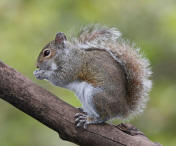
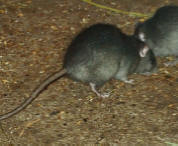


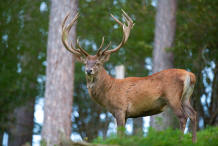
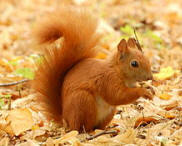
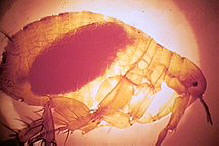
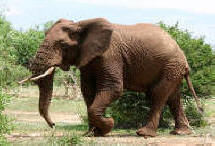
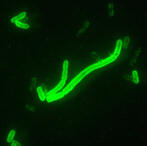

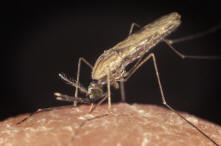

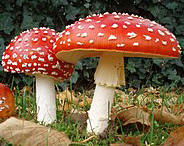
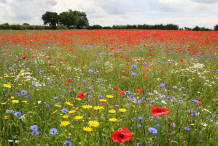
Line 1. Grey squirrel (Sciurus carolinensis), red squirrel
(Sciurus vulgaris), African elephant (Loxodonta
africana)
Line 2. Black
rat (Rattus rattus), laboratory mouse (Mus musculus),
common seal (Phoca vitulina)
Line 3. Red deer (Cervus
elaphus scoticus), European rabbit (Oryctolagus cuniculus), red
fox (Vulpes vulpes)
This
species of flea is the primary
vector for the transmission of
Yersinia pestis, the organism responsible for bubonic plague in most
plague epidemics.
Fallows C, Gallagher AJ, Hammerschlag N (2013)
White shark (Carcharodon carcharias)
European robin (Erithacus rubecula
Male robins are noted for their highly aggressive territorial behaviour.
They will fiercely attack other males and competitors that stray into their
territories and have been observed attacking other small birds without
apparent provocation. There are instances of robins attacking themselves:
having seen their own reflection.
[30]
Such attacks sometimes lead to fatalities, accounting for up to 10% of adult
robin deaths in some areas.
only 30–40 commonly transmit parasites of the genus
Plasmodium, which cause malaria in humans in
endemic areas.
Anopheles gambiae is one of the best known, because of its
predominant role in the transmission of the most dangerous malaria parasite
species (to humans) –
Plasmodium falciparum.
Credit and licence information for these images provided below, with the
identity of each animal
Prove you're not a robot. Click on the animals which it would be
justifiable to kill in some circumstances.
If you think it would be justifiable to kill all of them in some
circumstances, click here.
If you think it wouldn't be justifiable to kill any of them, whatever the
circumstances, click here.
As of the latest World Malaria Report of the
World Health Organization, there were 219 million cases of malaria
worldwide in 2017, up from 216 million cases in 2016. This resulted in an
estimated 435,000 deaths.[6]
Almost every malarial death is caused by P. falciparum, and 93% of
death occurs in
Africa.
Children under five years of age are most affected, accounting for 61% of
the total deaths.[6]
In Sub-Saharan Africa, over 75% of cases were due to P. falciparum,
whereas in most other malarial countries, other, less virulent plasmodial
species predominate.[8]













